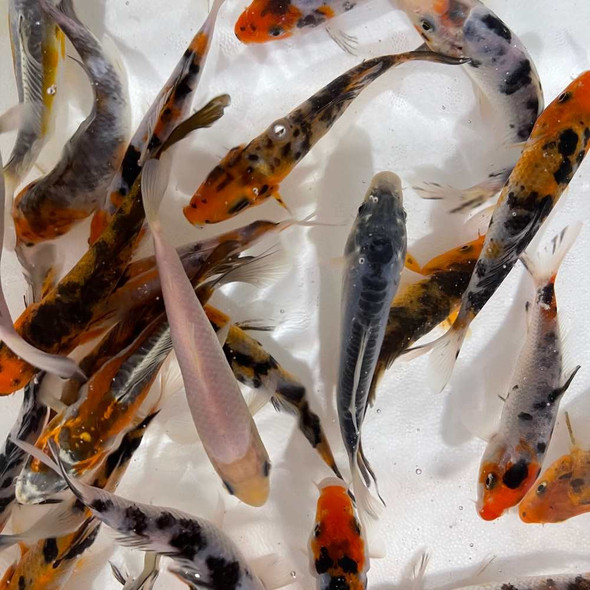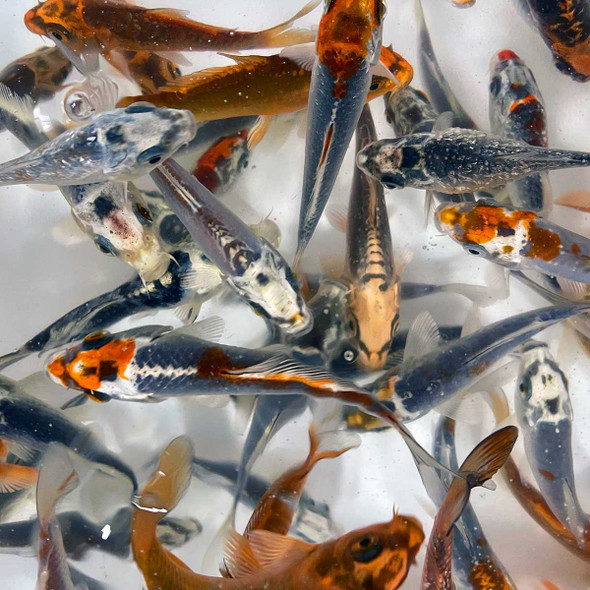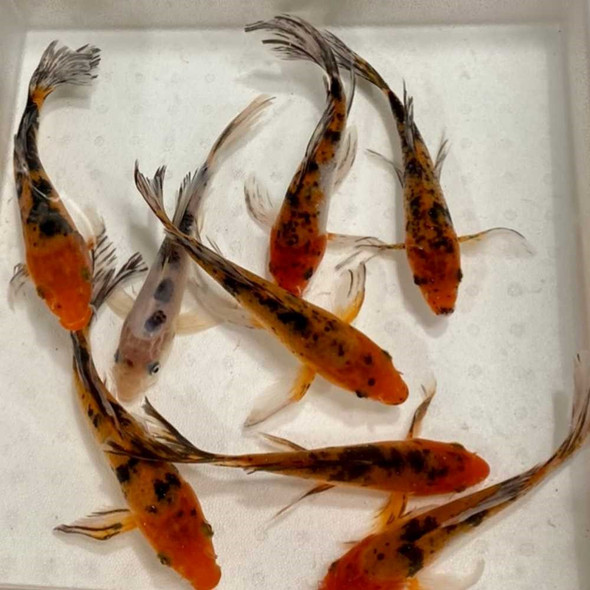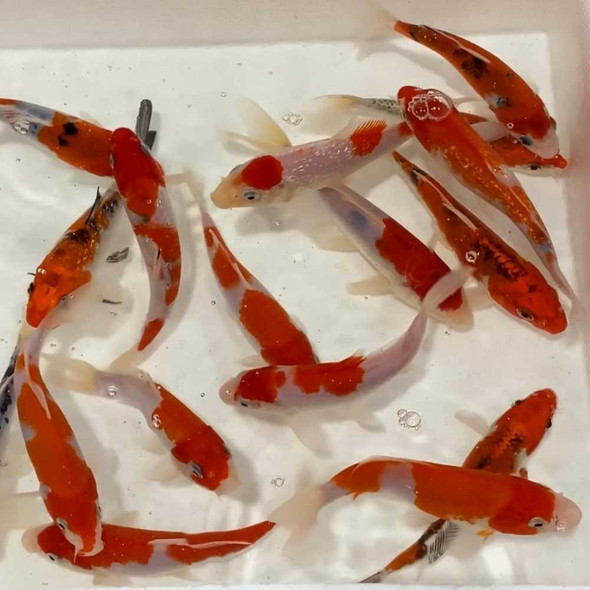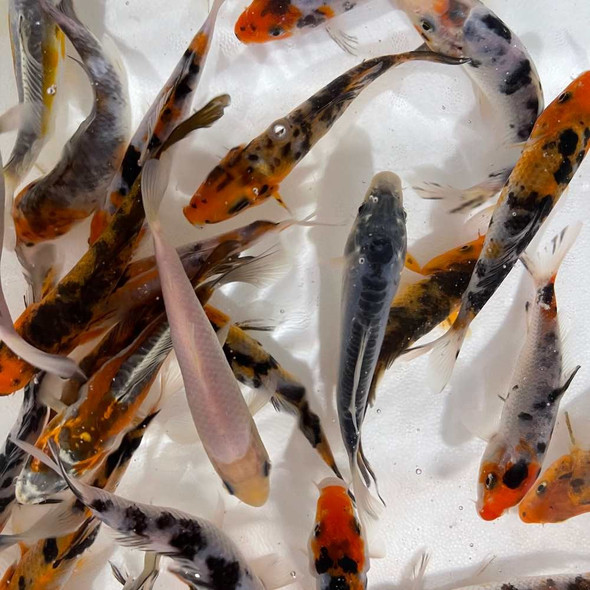Description
Freshwater Fish, Perfect for Ponds. Do Not put these in Saltwater.
Premium koi have bright colors with beautiful patterns. Premium Grade Koi have a much higher selection of colors and varieties compared to standard koi while maintaining a reasonable price.
Water quality
Koi are able to thrive in garden ponds that maintain high-quality standards for Japanese koi and goldfish. Ideally, the pH should be kept fairly neutral to prevent the fish from developing eye, gill, and skin diseases. Markedly alkaline water may also cause the conversion of waste and elemental compounds into toxic substances. Regularly check the water pH and conduct frequent water changes to maintain optimal levels.
Temperature
As carp are coldwater fish, it follows that ghost koi are able to tolerate seasonal changes in temperature. The key is to ensure your pond’s depth is at least 3 feet as the koi will simply move toward the pond bottom if ambient temperatures are too cold for them. They should be able to survive outdoors given this depth, even if the surface freezes over. Floating and marginal vegetation should help keep the water cool during summer.
If kept in a tank, the ideal water temperatures for ghost koi range from 18 – 24˚C (64 – 75˚F). Their metabolic capacities are highest at this range.
Food
Koi are poikilothermic, just like their predecessors. This means that their metabolic demands change according to water temperature. In spring and summer, their metabolism peaks, and they are able to consume and convert high-protein fish feeds and natural food types into more body mass. As temperatures drop, they are less likely to metabolize proteins and may prefer carbohydrate (wheat-germ) rich feeds. Once water temperatures dip to below 5˚C (41˚F), you should withhold feeding completely.



